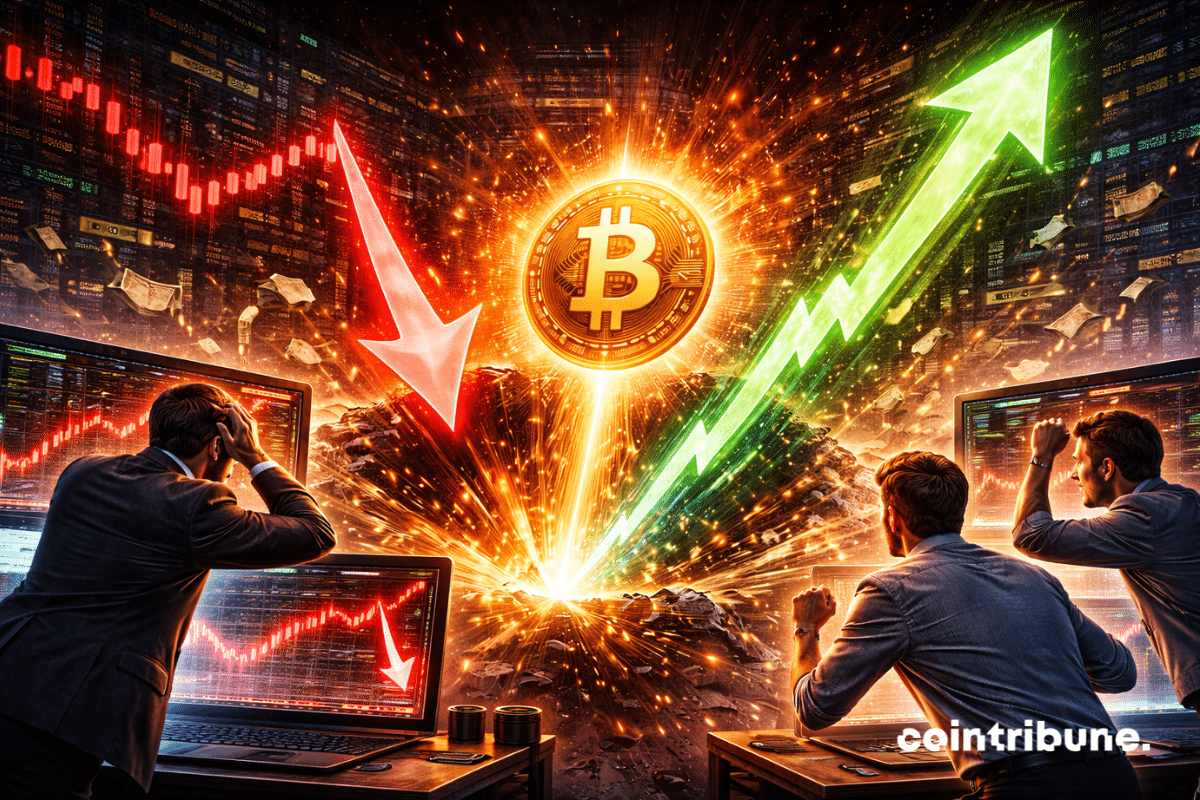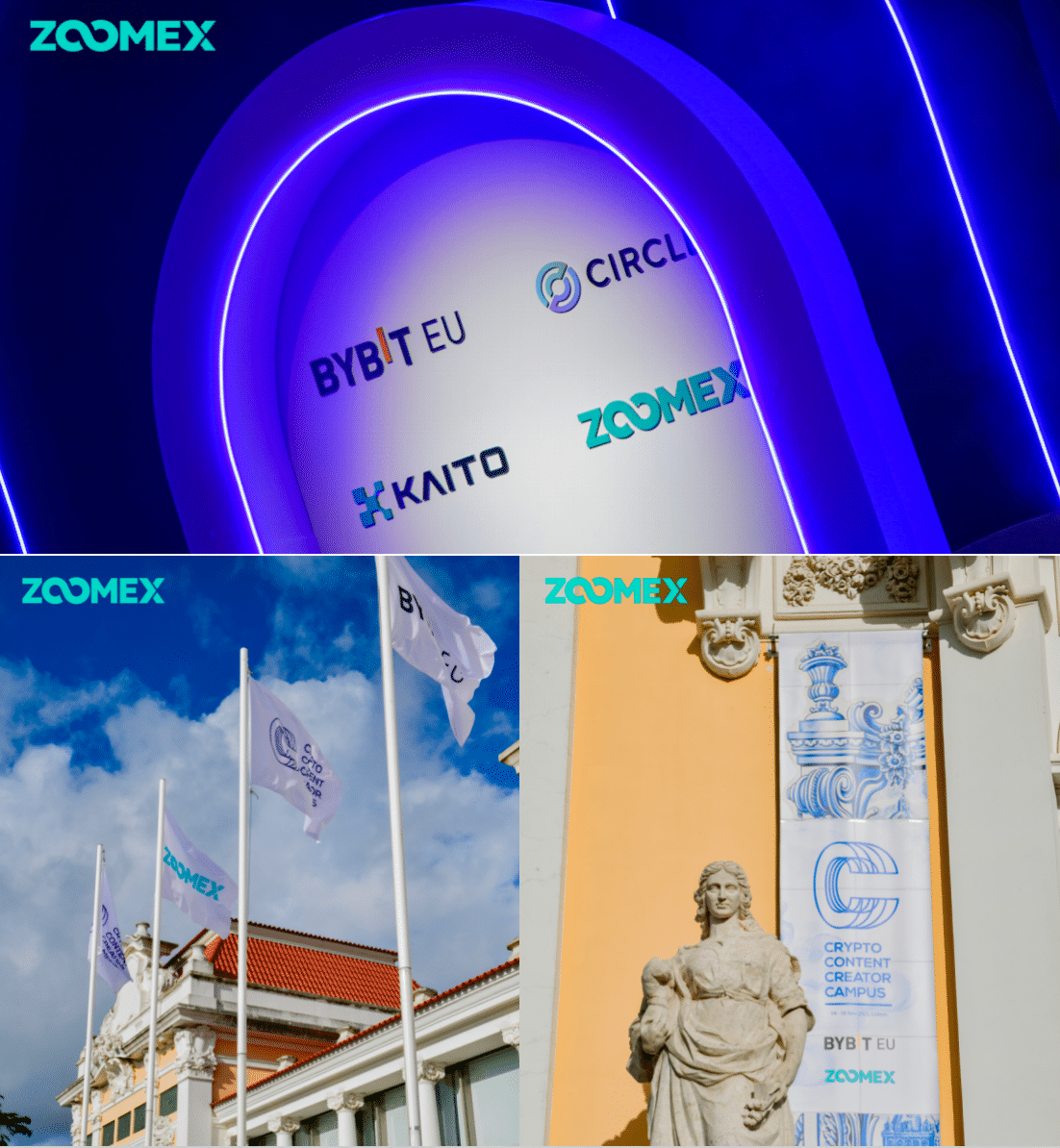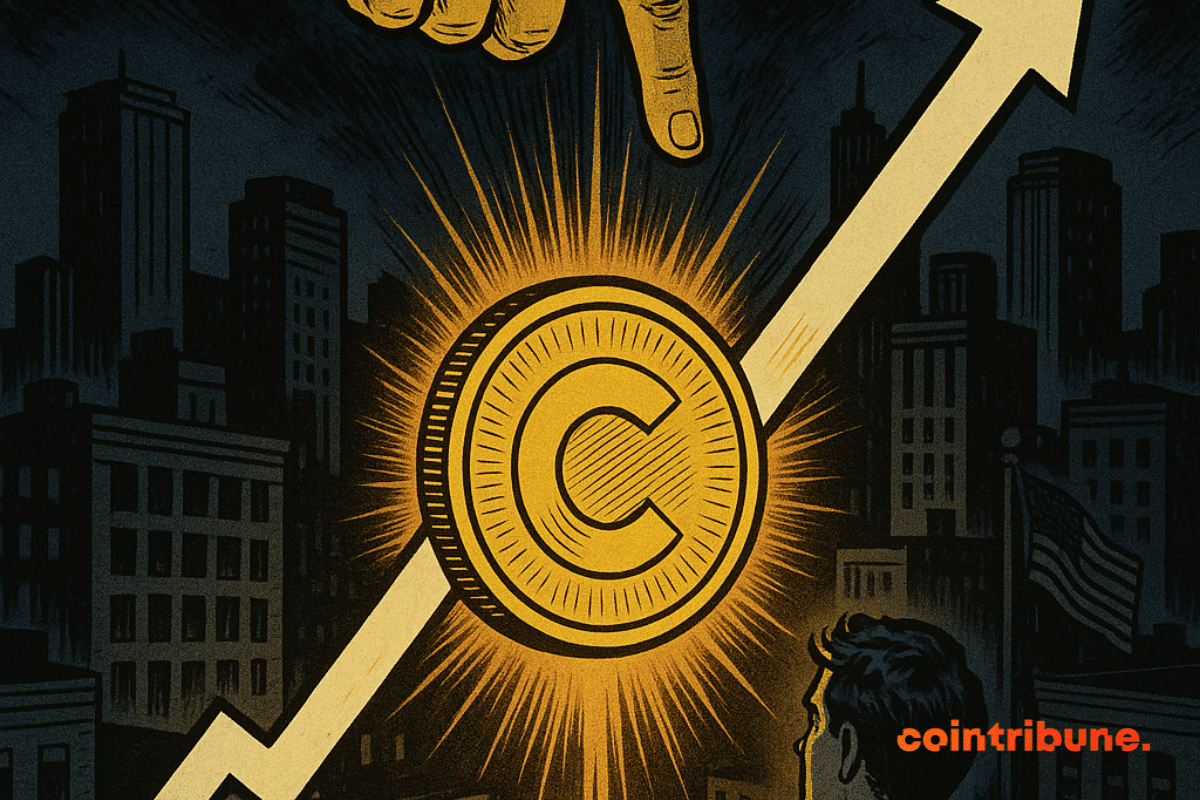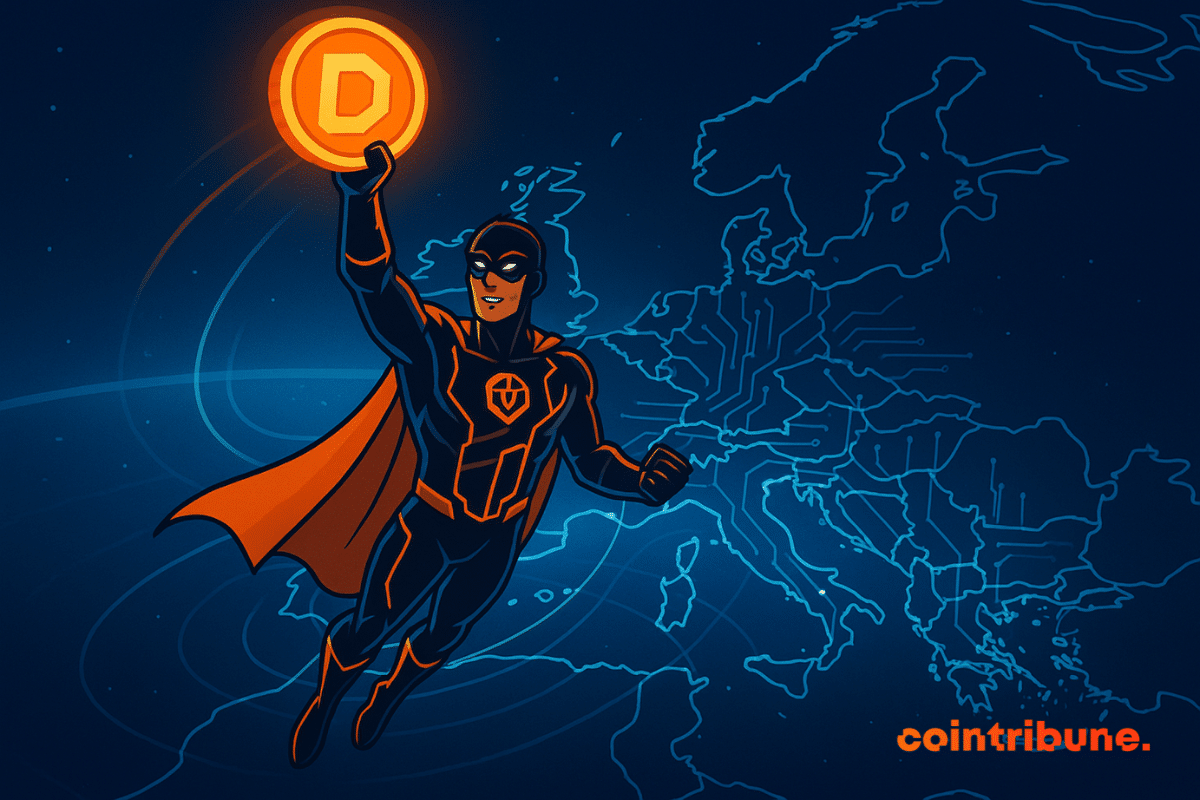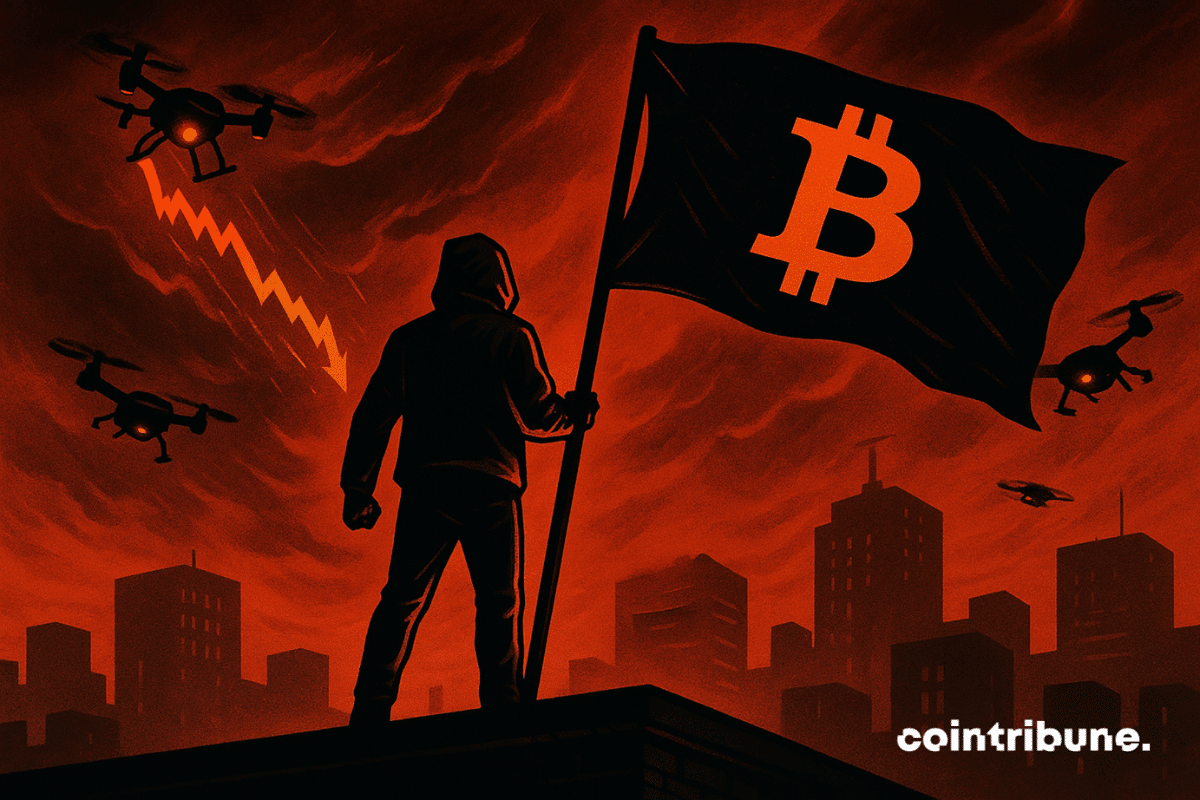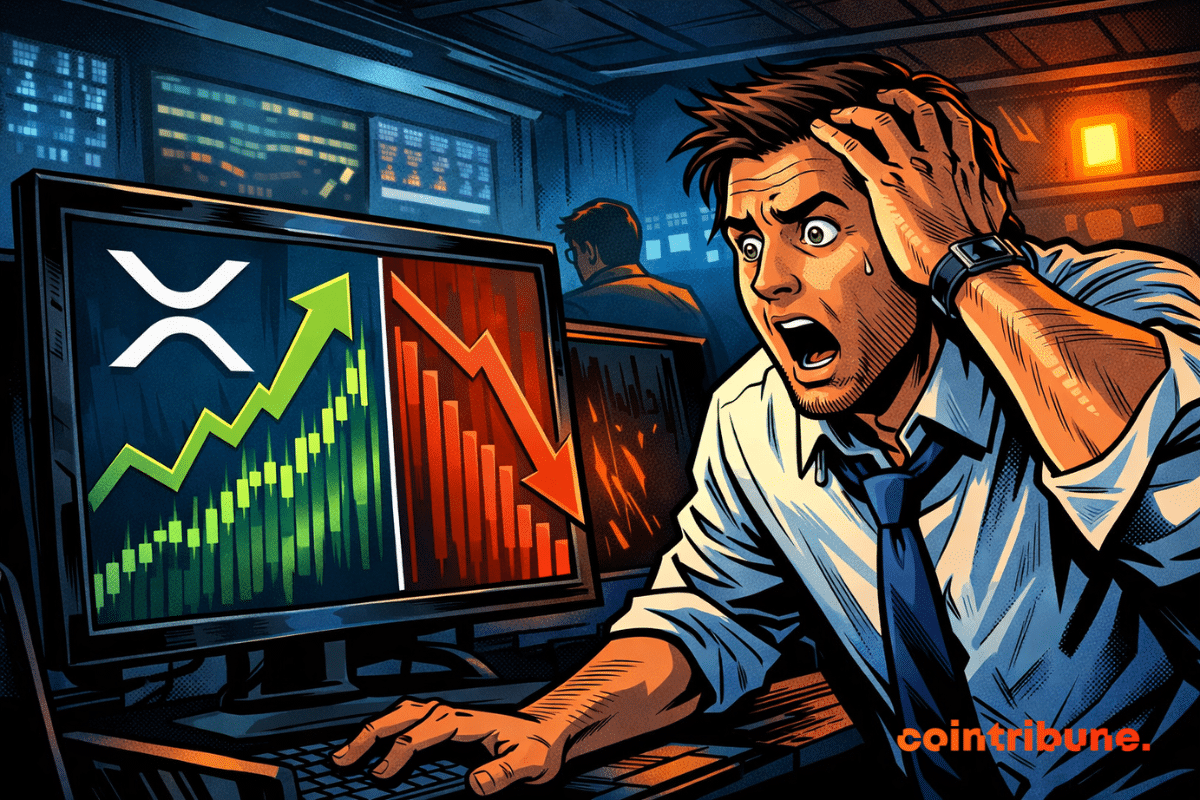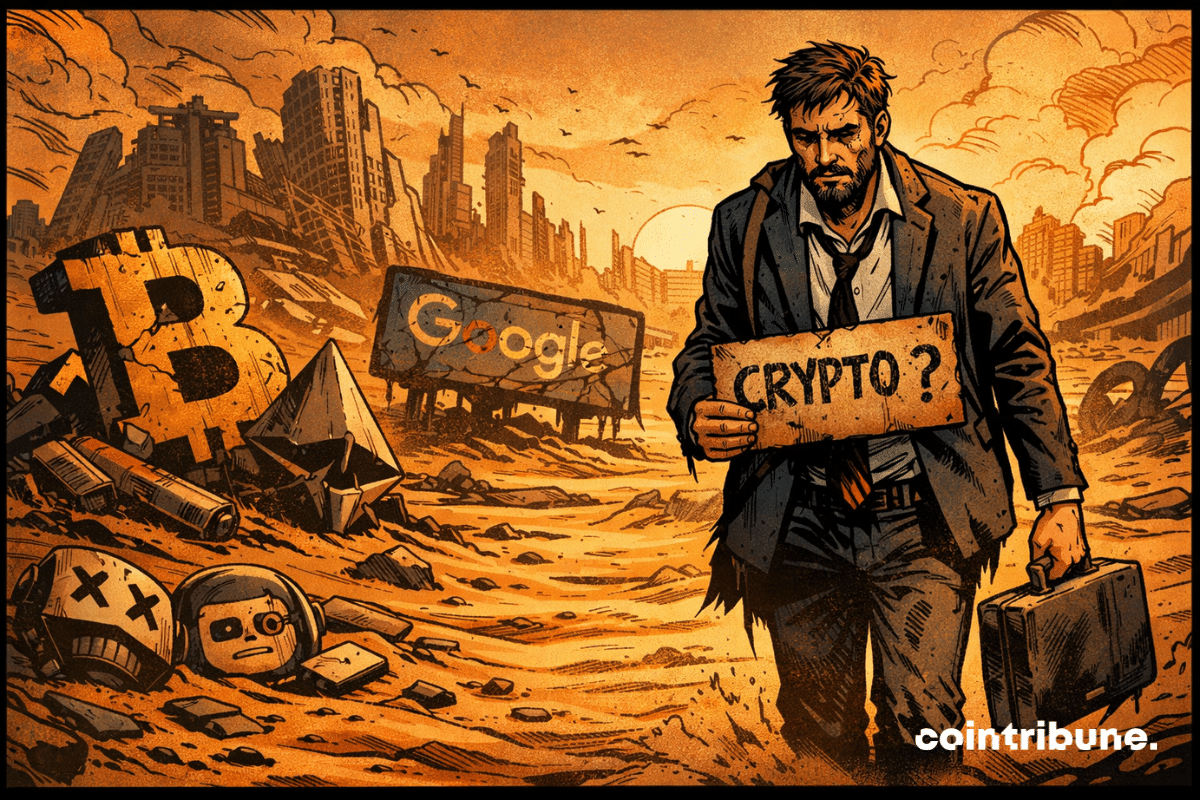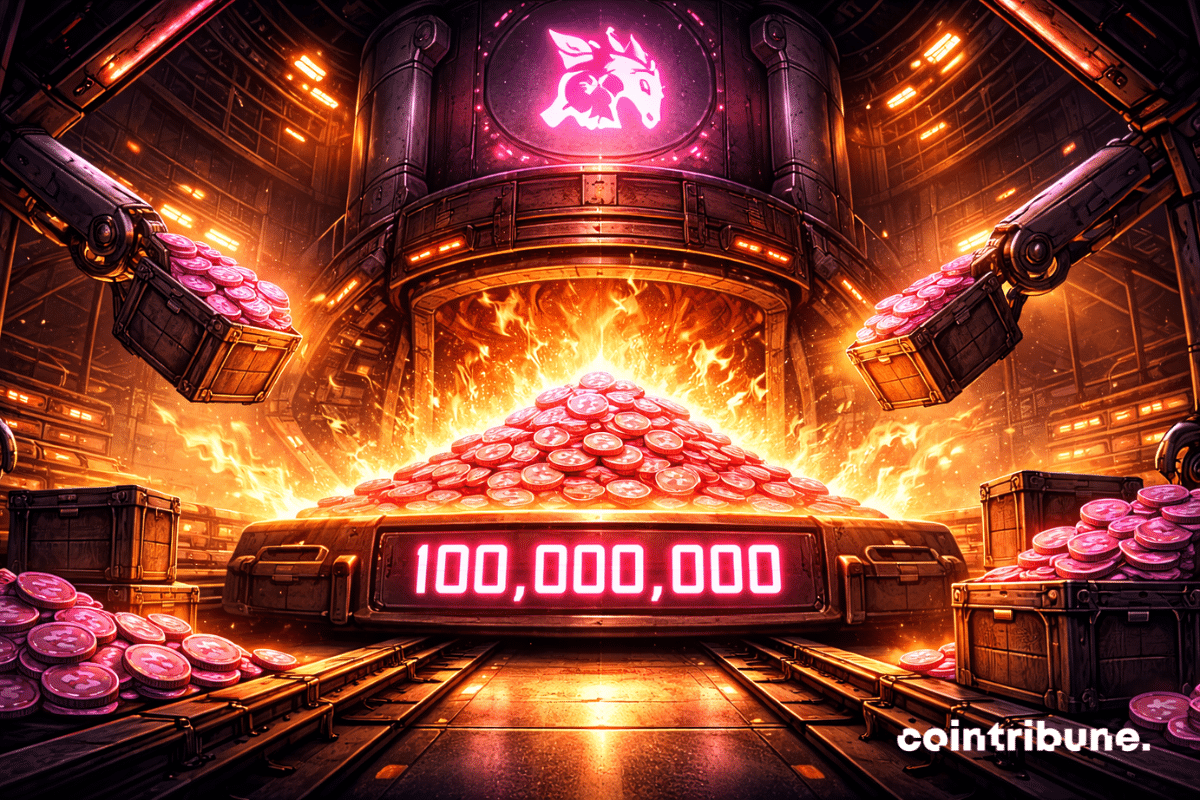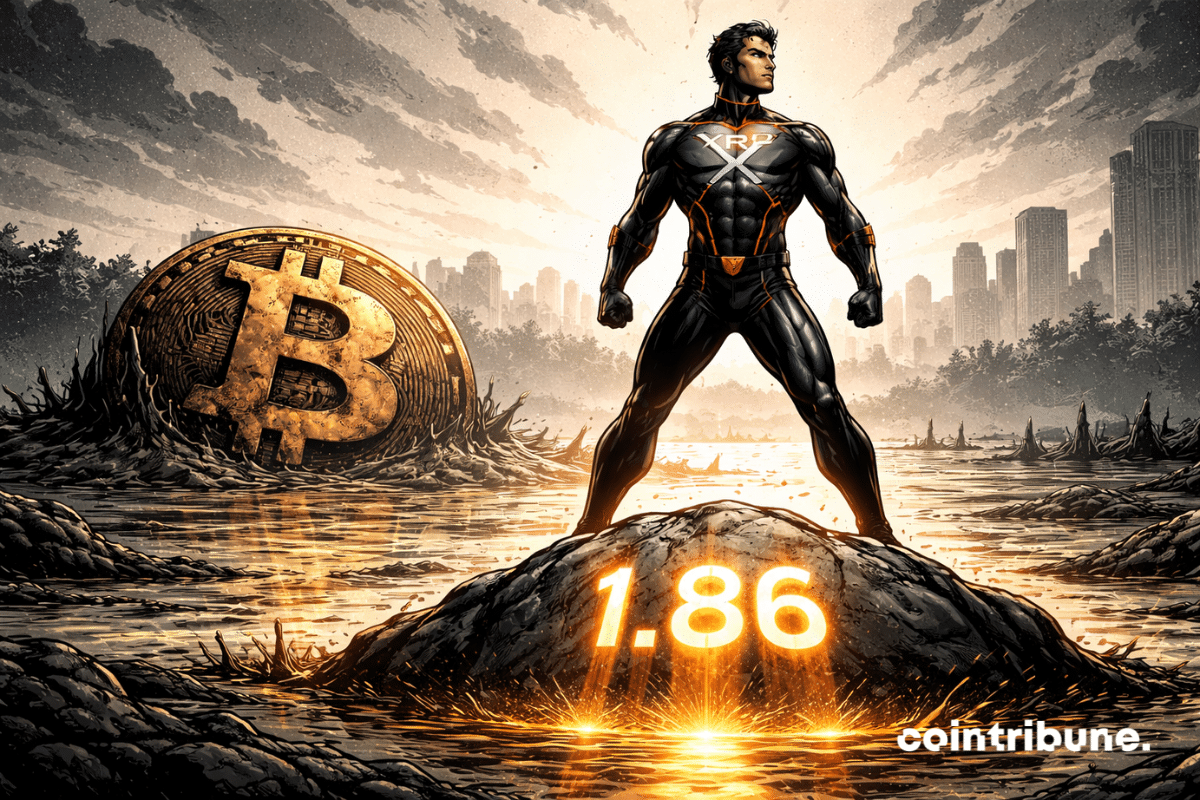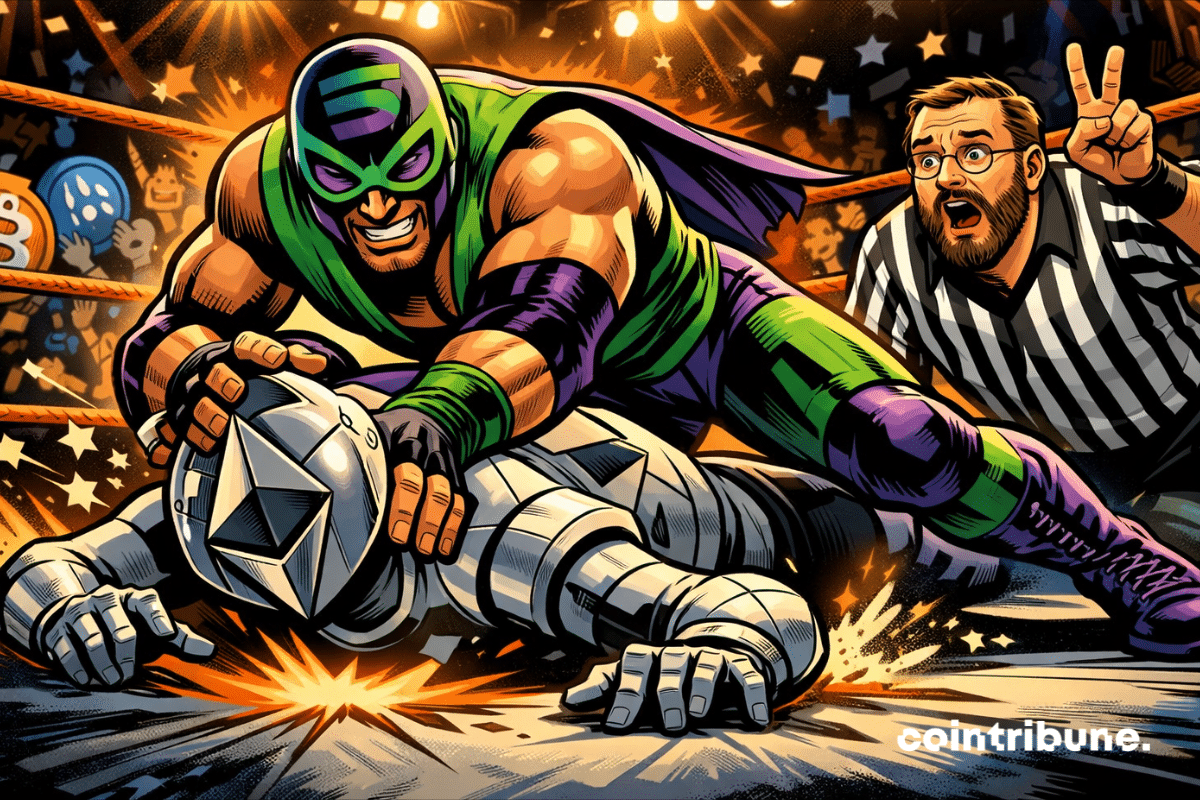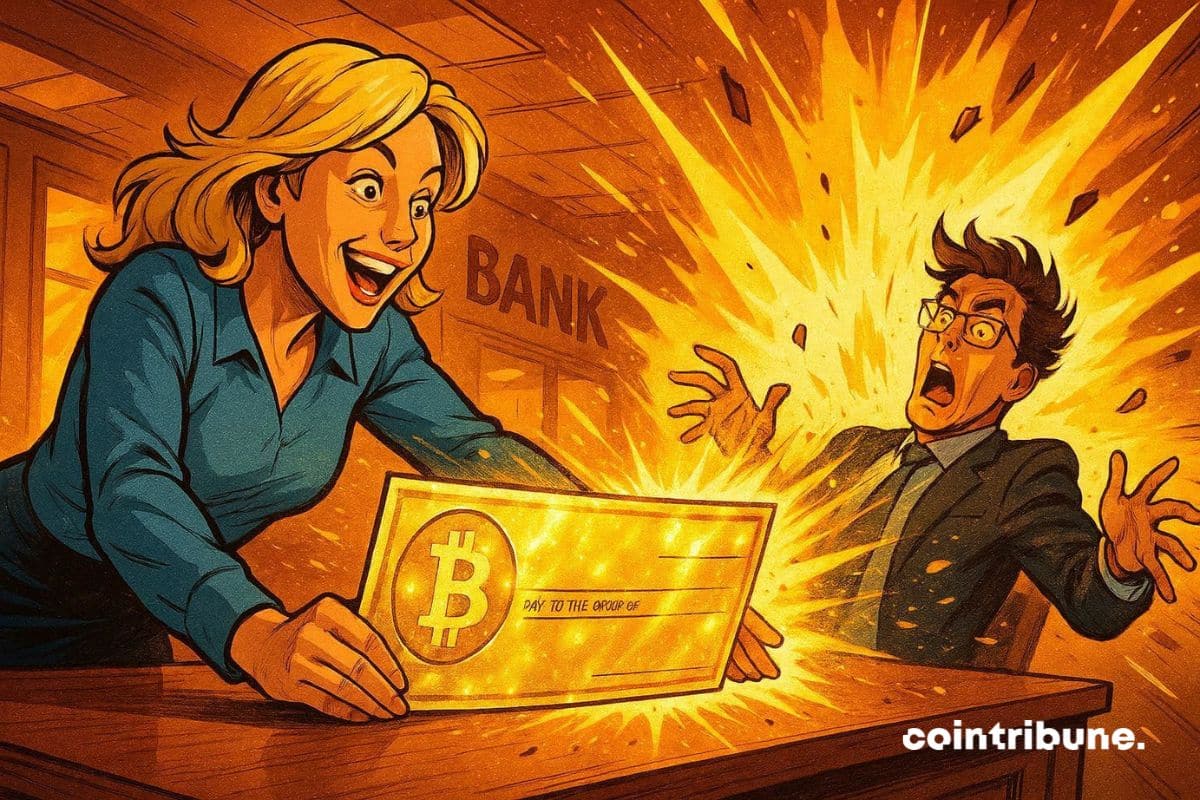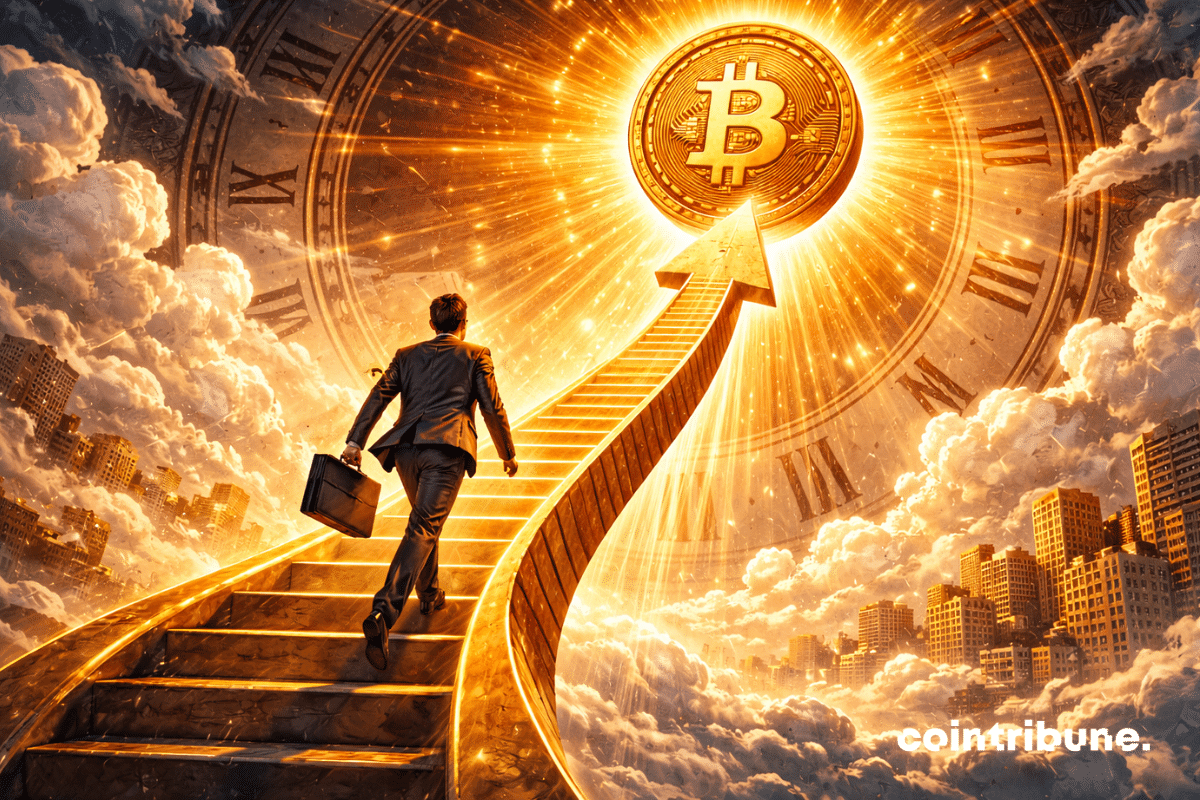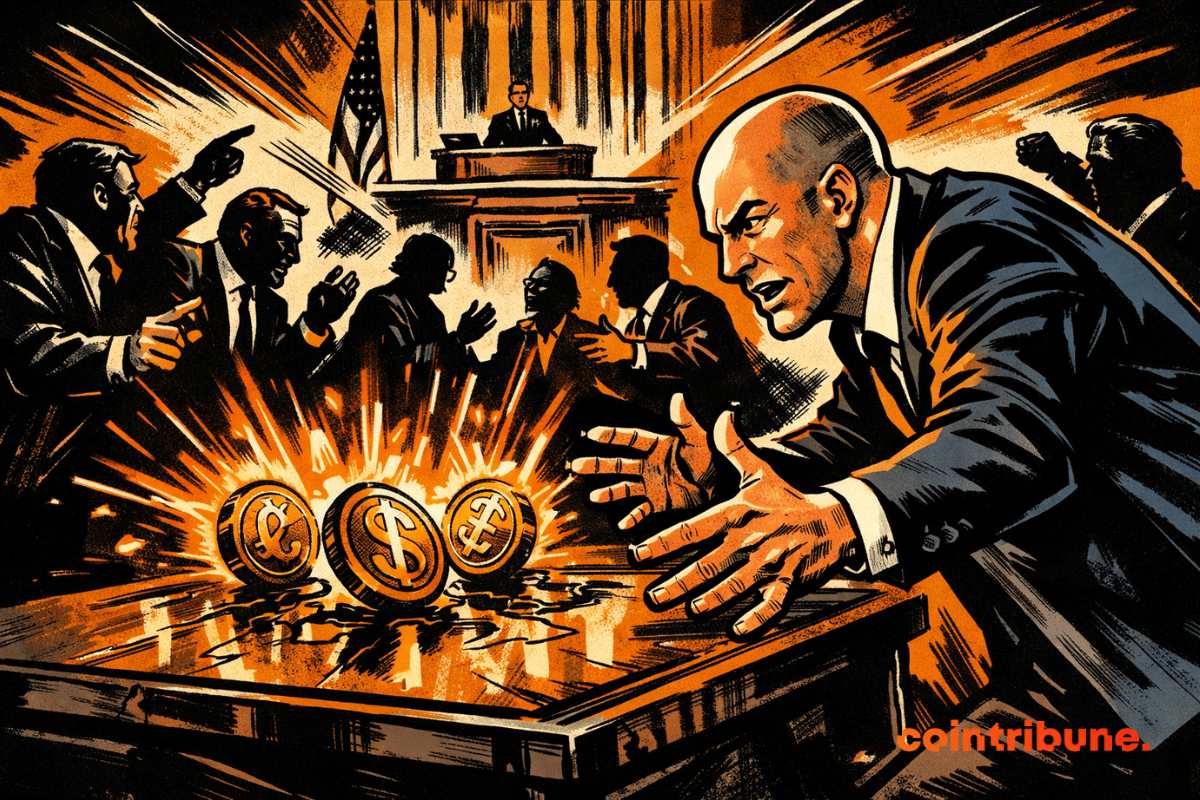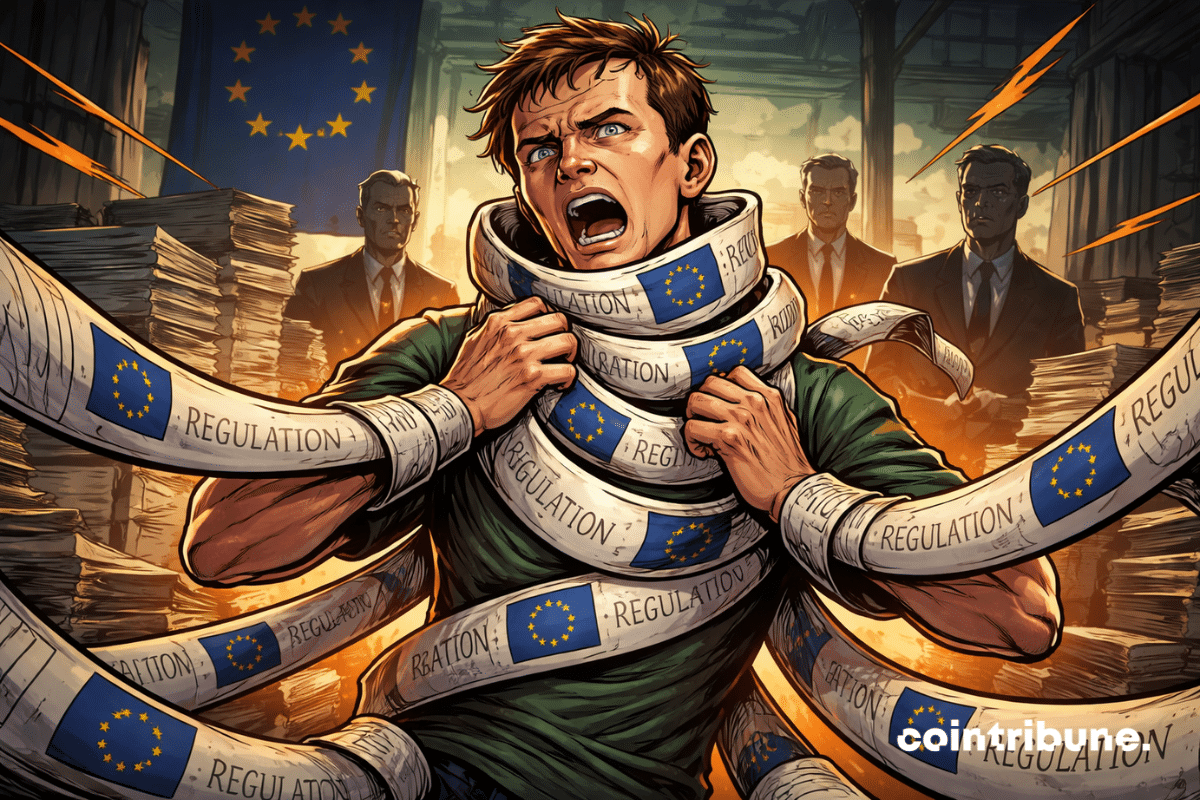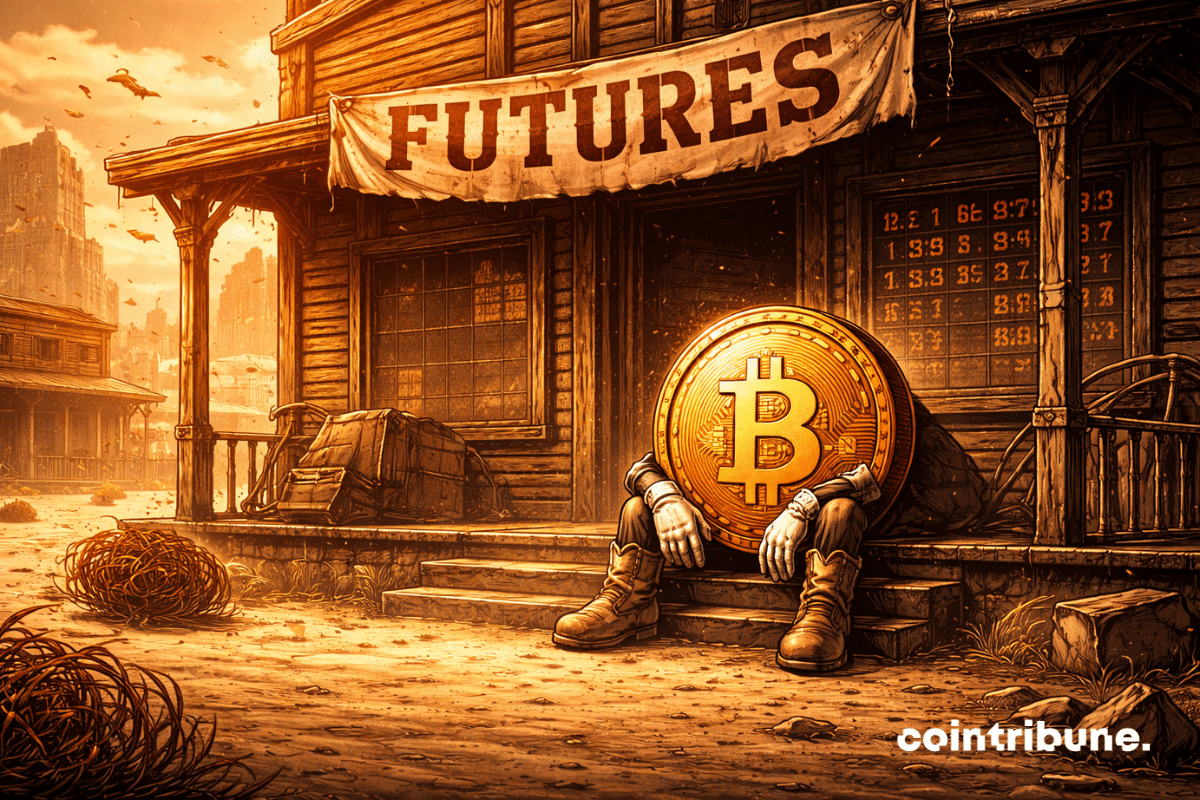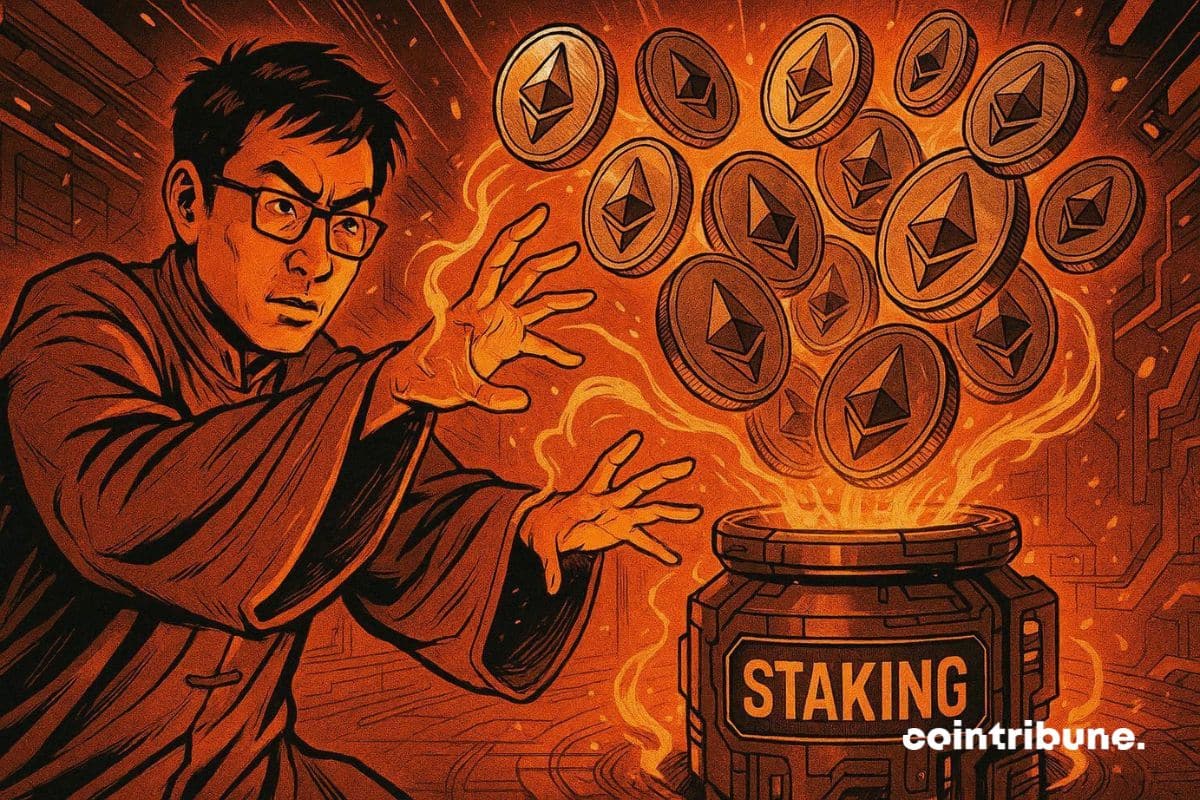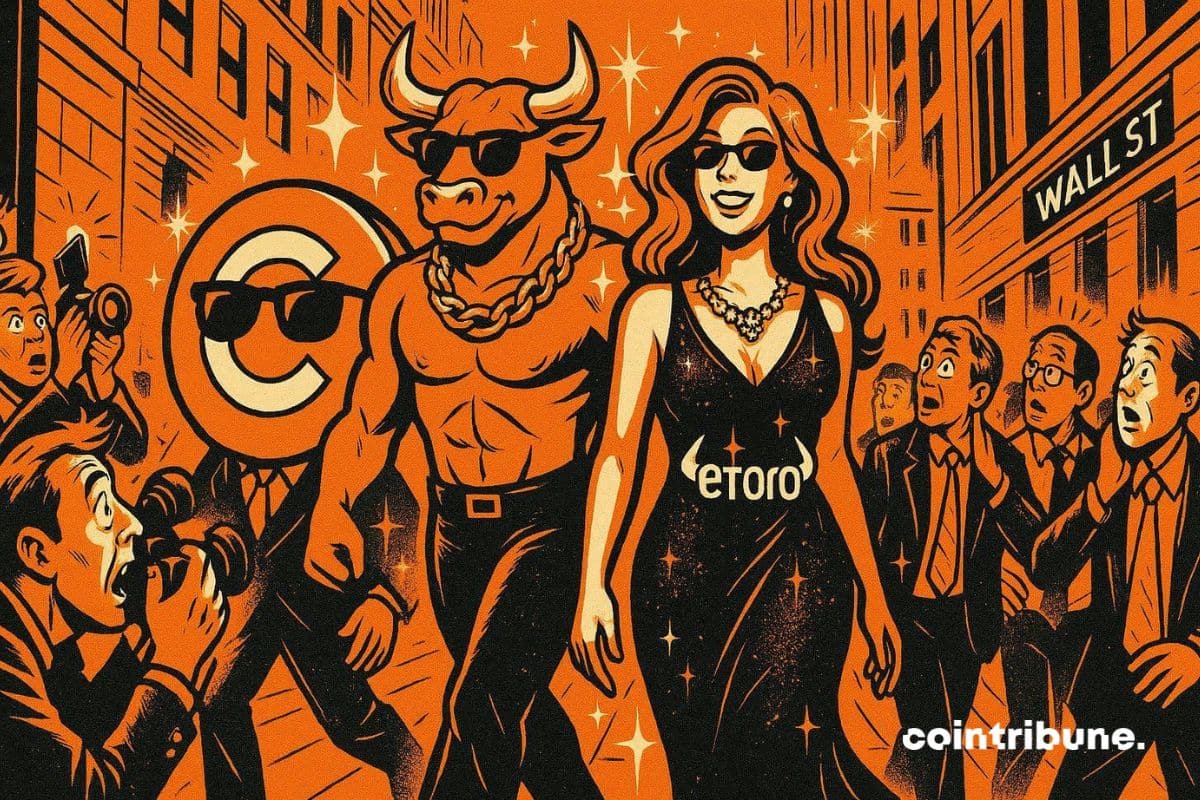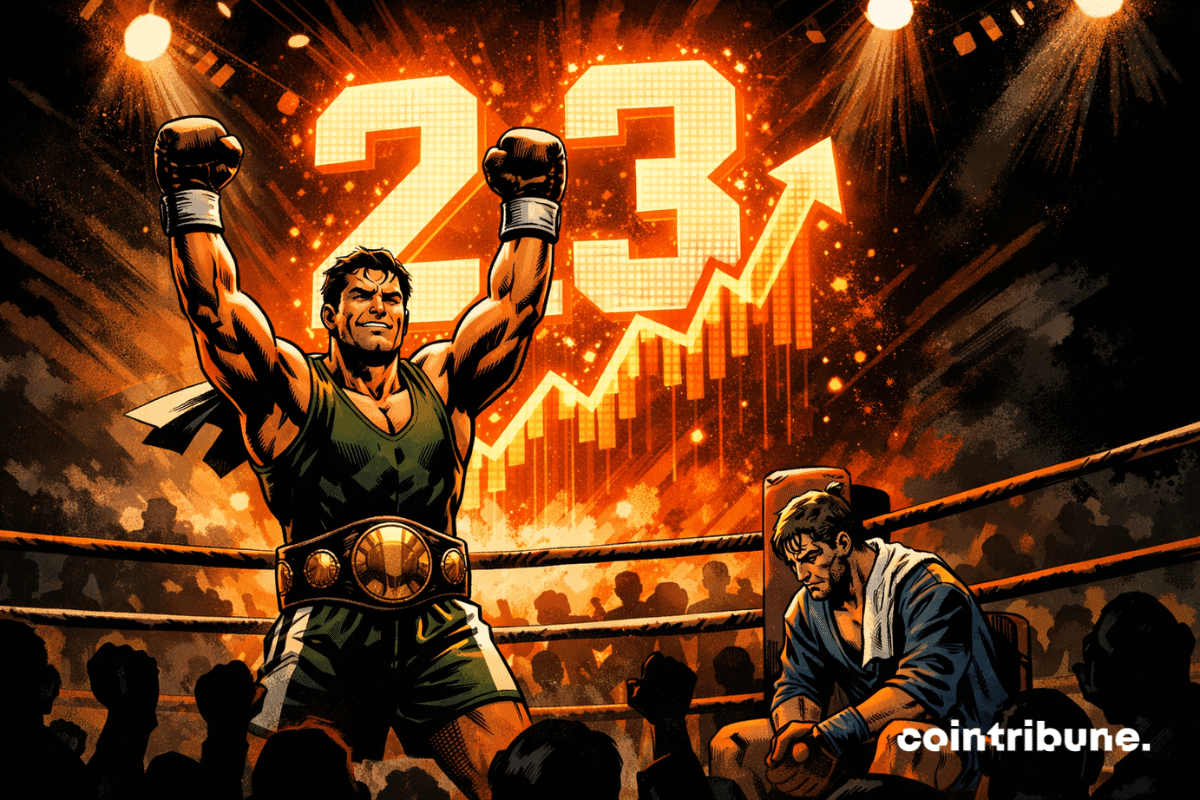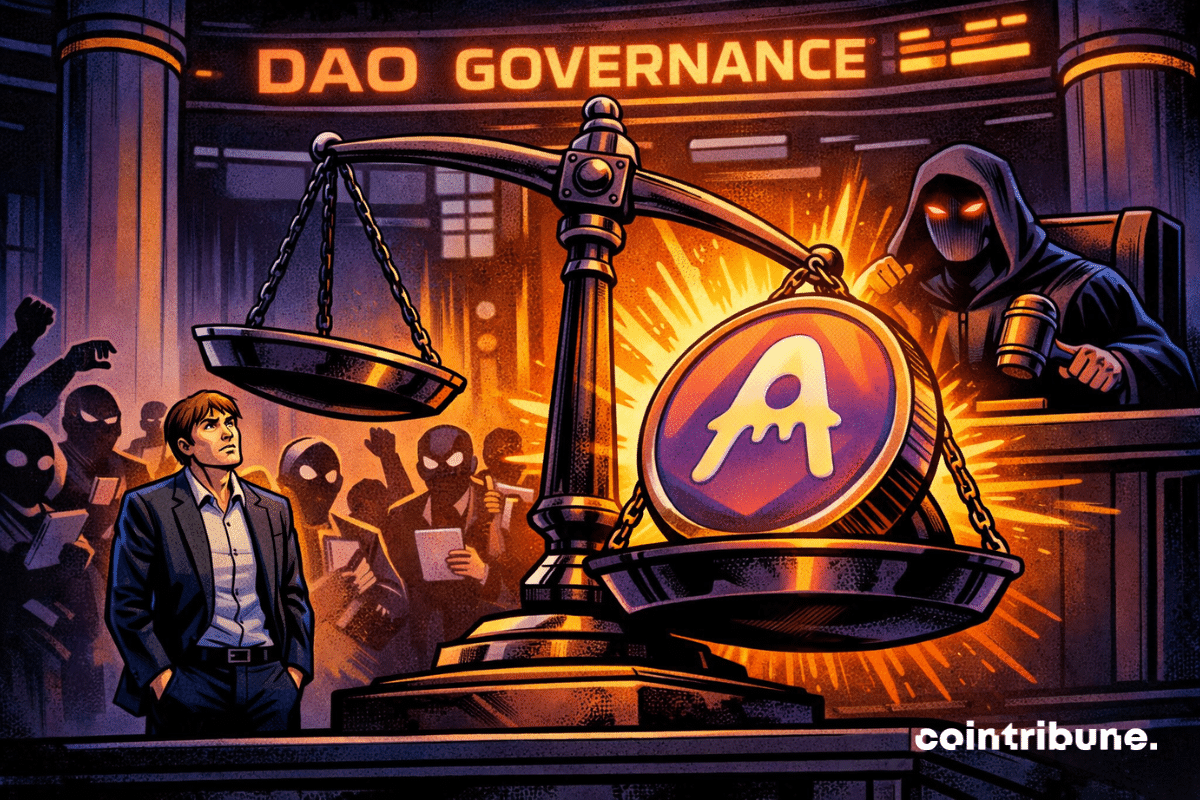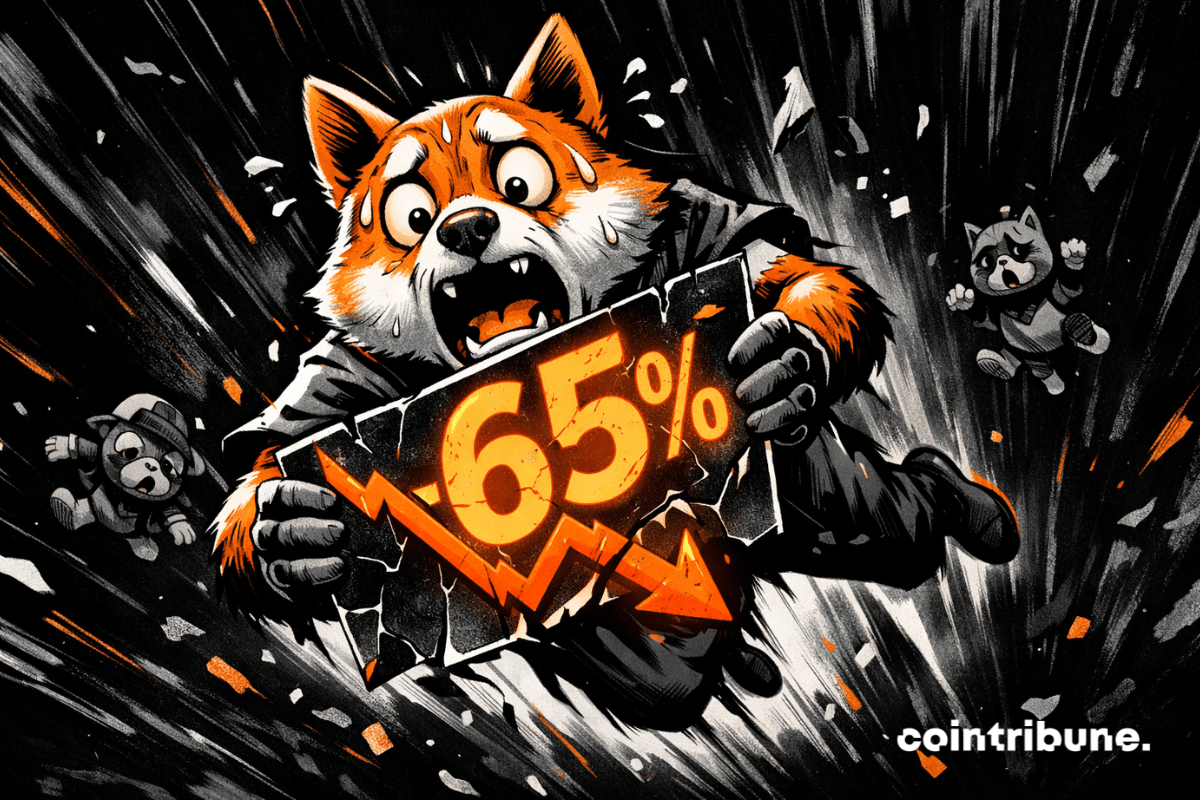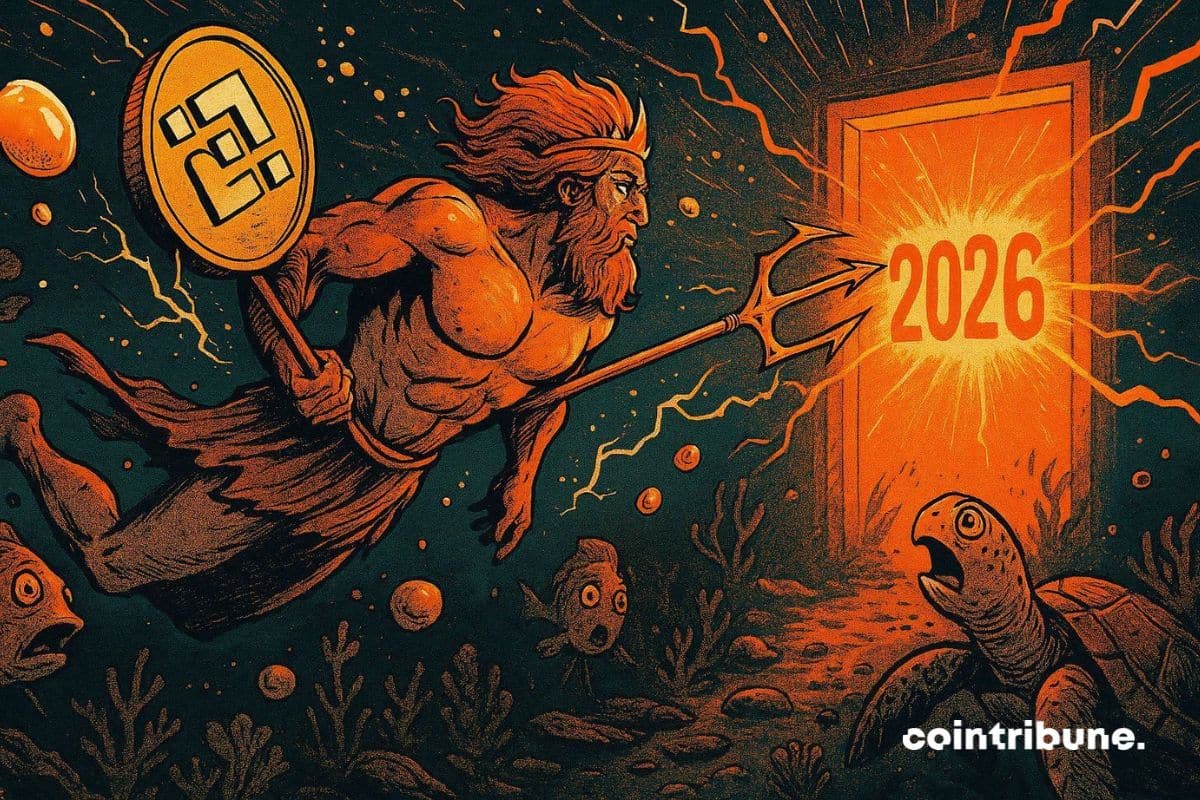Stellar partners with LayerZero to connect 150 blockchains and facilitate crypto asset transfers. Meanwhile, XLM fights to maintain its key support at $0.22. Could this partnership trigger a historic rise?
They promised the moon, but XRP falls silently. Even robots are worried... What if the dreamed crypto became the forgotten anecdote of New Year's Eve?
Bitcoin is playing big at the end of this year. For the first time since its creation, the flagship crypto could close a post-halving year in the red. An unprecedented scenario that would call into question one of the historic pillars of crypto analysis: the famous 4-year cycle theory. While BTC stagnates below $88,000, investors and analysts hold their breath. A bearish close would mark a symbolic and potentially structural turning point for the entire market.
Crypto is plunging, Google is coughing, and retail traders are running away. The market is now just a VIP lounge for insiders lacking an audience. When will the sheep return?
On December 28, Uniswap carried out the destruction of 100 million UNI tokens, worth nearly 596 million dollars. This decision, validated by a massive community vote, marks the entry into force of a new economic framework called "UNIfication." It inaugurates a structural change in the governance of the protocol, based on the activation of protocol fees and a sustainable burn mechanism. Uniswap thus initiates a new phase of its evolution, focused on active management of the value created.
Bitcoin lost momentum during U.S. trading hours, keeping the broader crypto market confined to a narrow range. XRP followed the same pattern, slipping to $1.86 even as demand through spot exchange-traded funds remained steady. The gap between rising ETF assets and muted price movement suggests the market is still absorbing supply near key levels.
Charles Hoskinson compares Solana and Ethereum, noting Solana’s rapid growth potential and Ethereum’s focus on long-term, research-driven development
Crypto debanking suffocates businesses, but Cynthia Lummis sees a glimmer of hope: the "skinny accounts" of the Fed. Could this solution finally put an end to arbitrary bank account closures? After the Strike vs JPMorgan case, the senator takes action.
What if 2025 was not the beginning of a long decline, but the end of a bearish cycle? While fear settles on the markets and bitcoin remains far from its peaks, Samson Mow, founder of Jan3, challenges certainties. According to him, the bear market is already behind us, and what many fear for 2026 could actually mark the start of a historic bull run... lasting ten years.
Coinbase CEO Brian Armstrong has warned US lawmakers against reopening the recently passed GENIUS Act, arguing that changes could reduce competition in the stablecoin market. He accused major banks of pushing Congress to weaken the law to protect their own interests. The comments come as debate grows over how stablecoins should be regulated in the United States.
JPMorgan freezes BlindPay and Kontigo accounts over Venezuela links as stablecoins gain a key role in the country’s economy.
Regulation sometimes looks like a room too neatly arranged. Nothing sticks out. Not a draft. And that's precisely what Vitalik Buterin criticizes about the European Union: wanting a "clean" internet, without rough edges, to the point of reducing the oxygen available for crypto innovation. In a long message posted on X, the Ethereum co-founder points to the sore spot: the Digital Services Act (DSA) wouldn't just try to contain the damage, it seeks to eliminate the very space where controversial ideas are born.
While the asset oscillates around 87,000 dollars, the derivatives markets send a clear signal: open interest on Bitcoin futures contracts has dropped to its lowest level in eight months. This decline marks a net disengagement from leveraged positions, revealing a tactical withdrawal of speculative capital, in a context where the bullish momentum seems to be fading without an immediate catalyst.
Coinbase pays for justice, not ransom. Data leak, arrest in India, bounty for whistleblowing... courtroom crypto-comedy in several acts.
Bitmine has just deposited 219 million dollars in ETH into staking, marking a historic turning point for Ethereum. With over 540 million invested in one month, this move could redefine the institutional rules of the game. A risky or visionary strategy? Decoding a bet that is already shaking up the crypto market.
After siphoning off millions for a month, the XRP ETF coughs one day, stops... and everyone holds their breath: simple cold or crypto liver crisis?
In 2025, three crypto giants made history with explosive IPOs: Circle (+168%), Bullish (+143%), and eToro (+32%). Behind these spectacular figures lie crucial lessons for investors. Discover how these stock market launches redefined Wall Street, and what 2026 holds for us with Kraken and other major players.
Kalshi saw a sharp rise in trading activity last week, pushing weekly volume to a new high. Data shows the prediction market processed more than $2 billion in trades, placing it well ahead of Polymarket over the same period. Increased demand for sports contracts and broader blockchain access supported the growth.
When the boss of Aave puts 15 million on the table, crypto wonders who really governs... and who votes without raising a hand.
Once shining symbols of speculative euphoria, memecoins are going through a major crisis. Their market capitalization has collapsed from 100 to 35 billion dollars within twelve months, reflecting a radical shift in retail investors' appetite. Does this spectacular drop mark the end of an era for these controversial digital assets?
Crypto-related losses surpassed the $2.5 billion mark in 2025, marking a turning point in the methods used by cybercriminals. Now, social engineering is established as the preferred technique to steal funds, according to a recent industry report.
On January 14, 2026, BNB Chain activates Fermi, a major update reducing block times to 250 ms. A revolution for transactions and DeFi? Discover the technical details, the impacts for users, and the forecasts for the BNB price. A breakthrough that could change everything in the crypto ecosystem.
Ethereum is establishing itself as a new central player in global finance. Driven by the rise of tokenization, the blockchain is now attracting the attention of Wall Street. Major institutions like BlackRock and Robinhood are actively exploring this technology, marking a turning point in crypto adoption. For Tom Lee, co-founder of Fundstrat, Ethereum is becoming a key infrastructure of the financial system. A dynamic that, according to him, could push the asset's price to unprecedented levels.
Bitmain, the world's leading manufacturer of mining machines, has launched a series of exceptional discounts on its equipment, including its latest models. This decision comes in a context of strong pressure on the sector: decline in hashprice, bitcoin crash, profitability in decline. Far from a classic commercial strategy, this operation reflects the tensions that the mining ecosystem is going through. Thus, the market leader is looking to quickly clear its stock.
The Kraken exchange platform officially launches xStocks for European investors, allowing the purchase of tokenized versions of American stocks and ETFs such as Apple, Tesla, or NVIDIA. A revolution in access to US markets, but with nuances to understand.
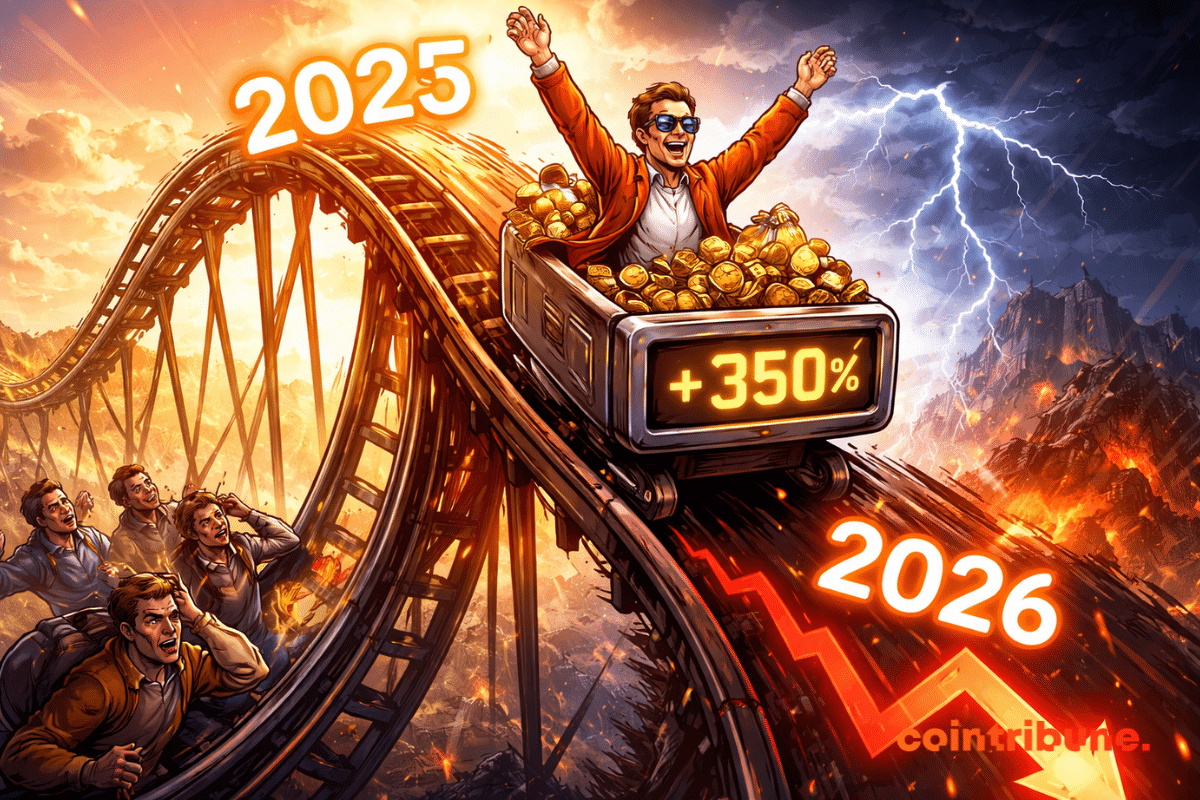
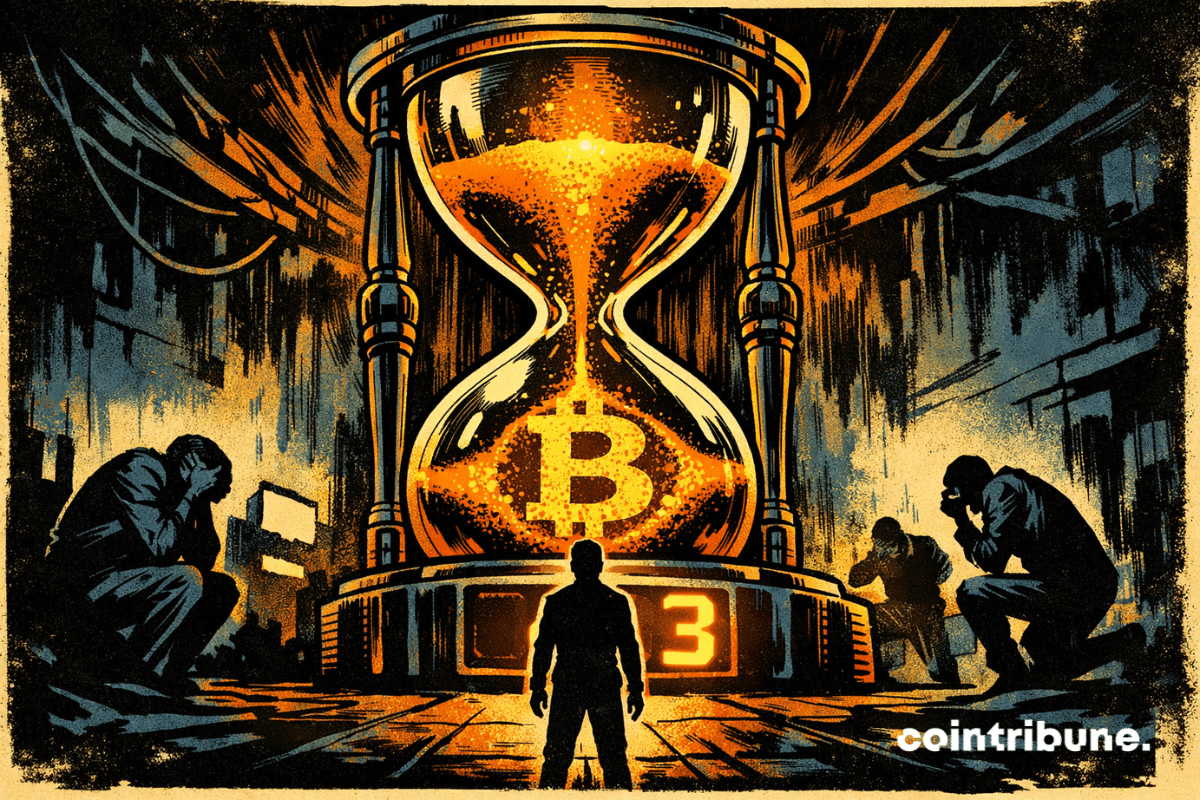

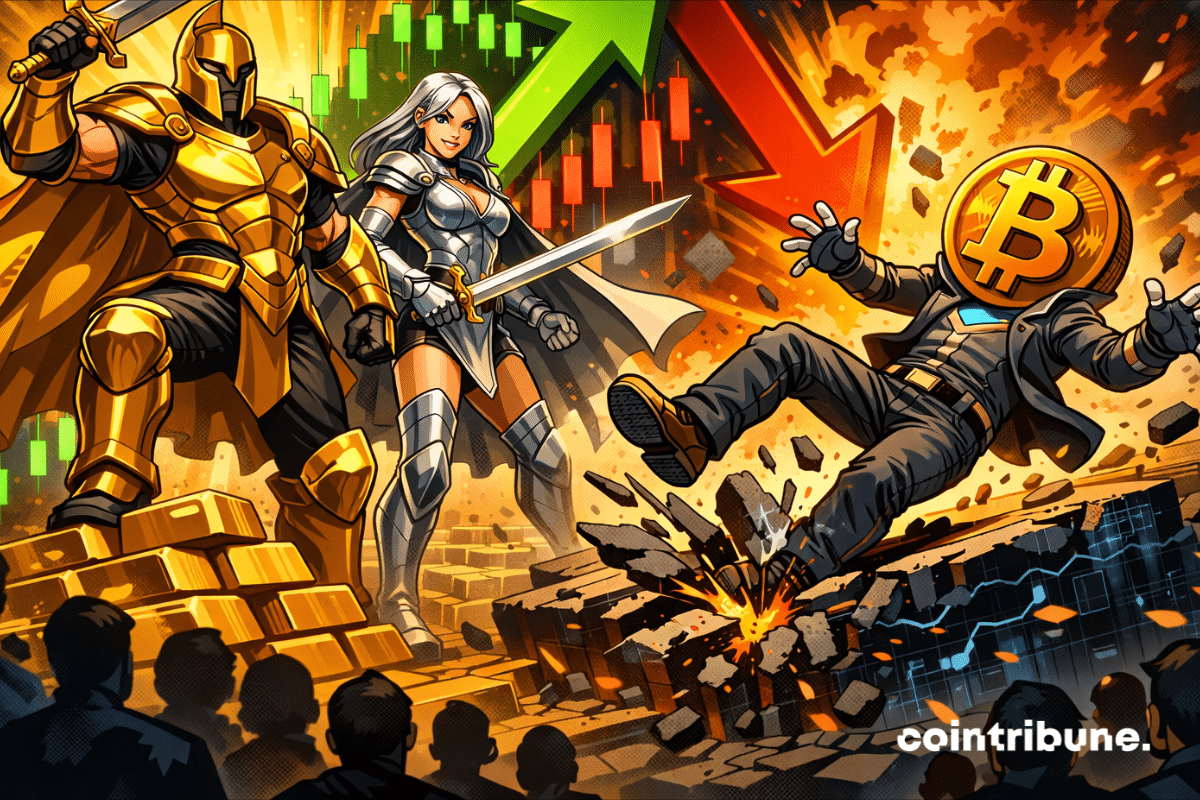

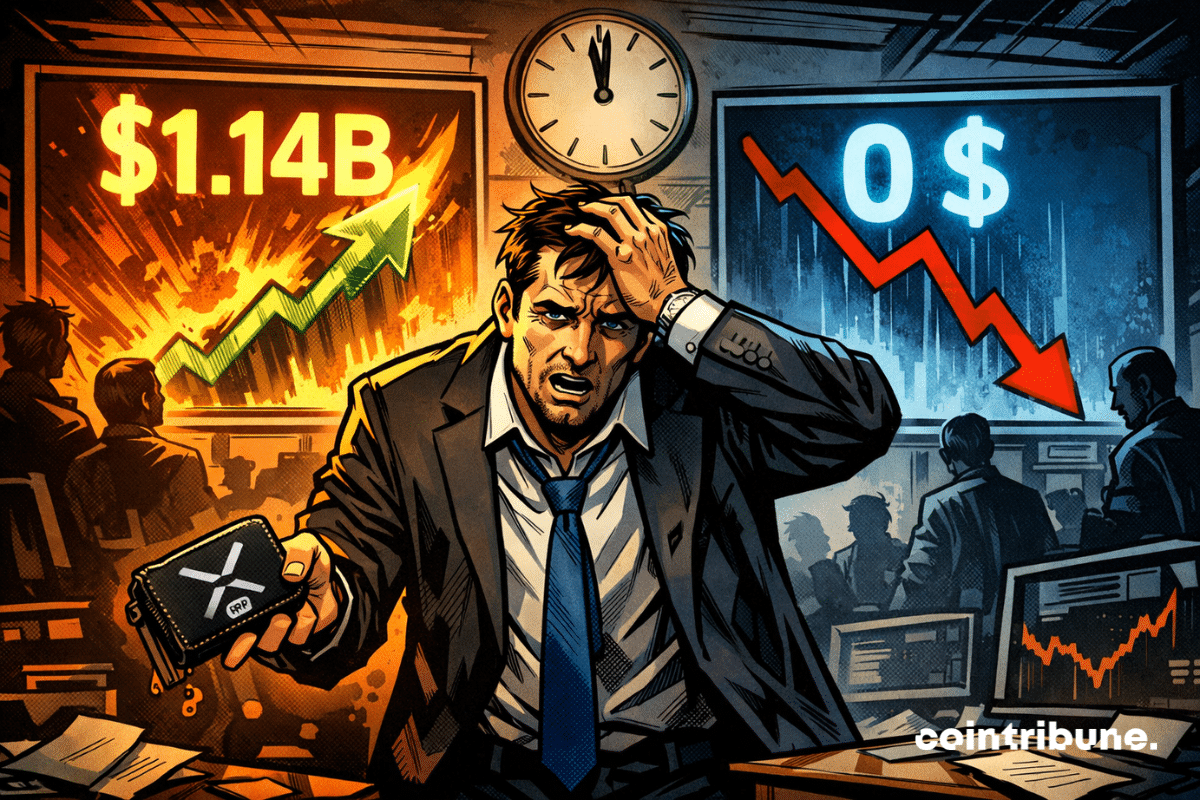 ." class="news-infos-swiper-slide--article--link--image" src="data:image/svg+xml,%3Csvg%20xmlns='http://www.w3.org/2000/svg'%20viewBox='0%200%200%200'%3E%3C/svg%3E" data-lazy-srcset="https://www.cointribune.com/app/uploads/2025/12/ZERO-ENTREE-ETF-XRP.png 1200w, https://www.cointribune.com/app/uploads/2025/12/ZERO-ENTREE-ETF-XRP-300x200.png 300w, https://www.cointribune.com/app/uploads/2025/12/ZERO-ENTREE-ETF-XRP-1024x683.png 1024w, https://www.cointribune.com/app/uploads/2025/12/ZERO-ENTREE-ETF-XRP-768x512.png 768w" data-lazy-sizes="(max-width: 1200px) 100vw, 1200px" data-lazy-src="https://www.cointribune.com/app/uploads/2025/12/ZERO-ENTREE-ETF-XRP.png">
." class="news-infos-swiper-slide--article--link--image" src="data:image/svg+xml,%3Csvg%20xmlns='http://www.w3.org/2000/svg'%20viewBox='0%200%200%200'%3E%3C/svg%3E" data-lazy-srcset="https://www.cointribune.com/app/uploads/2025/12/ZERO-ENTREE-ETF-XRP.png 1200w, https://www.cointribune.com/app/uploads/2025/12/ZERO-ENTREE-ETF-XRP-300x200.png 300w, https://www.cointribune.com/app/uploads/2025/12/ZERO-ENTREE-ETF-XRP-1024x683.png 1024w, https://www.cointribune.com/app/uploads/2025/12/ZERO-ENTREE-ETF-XRP-768x512.png 768w" data-lazy-sizes="(max-width: 1200px) 100vw, 1200px" data-lazy-src="https://www.cointribune.com/app/uploads/2025/12/ZERO-ENTREE-ETF-XRP.png">

